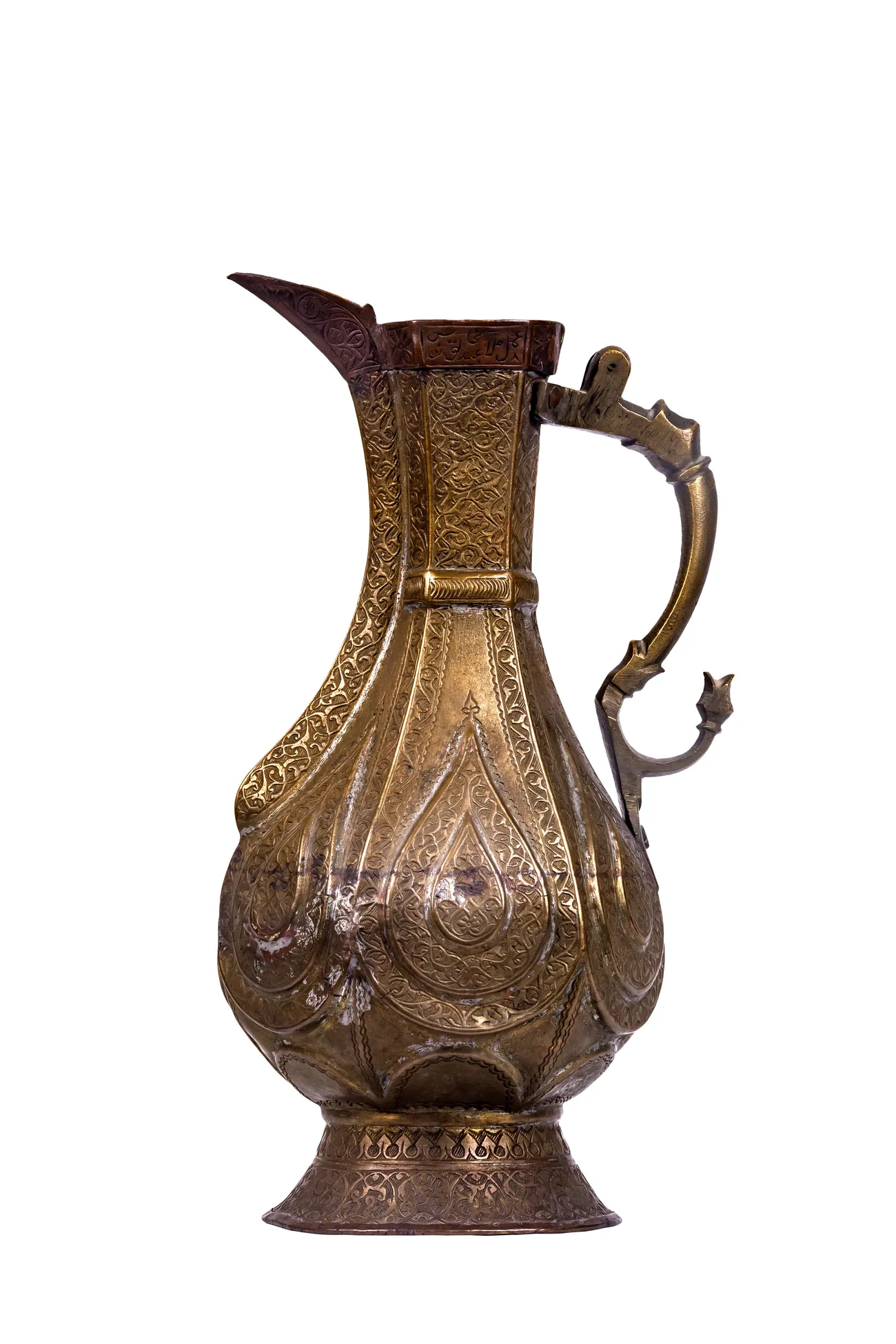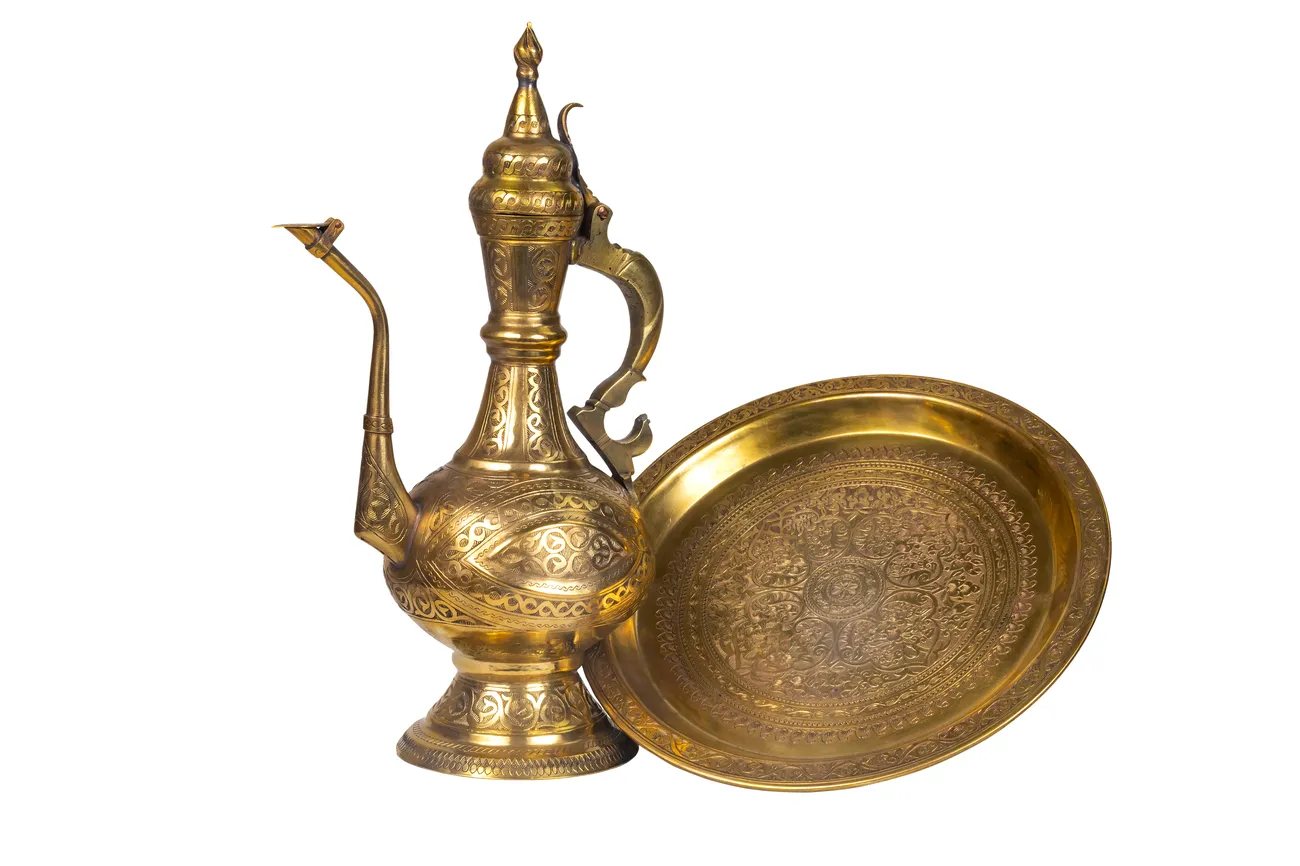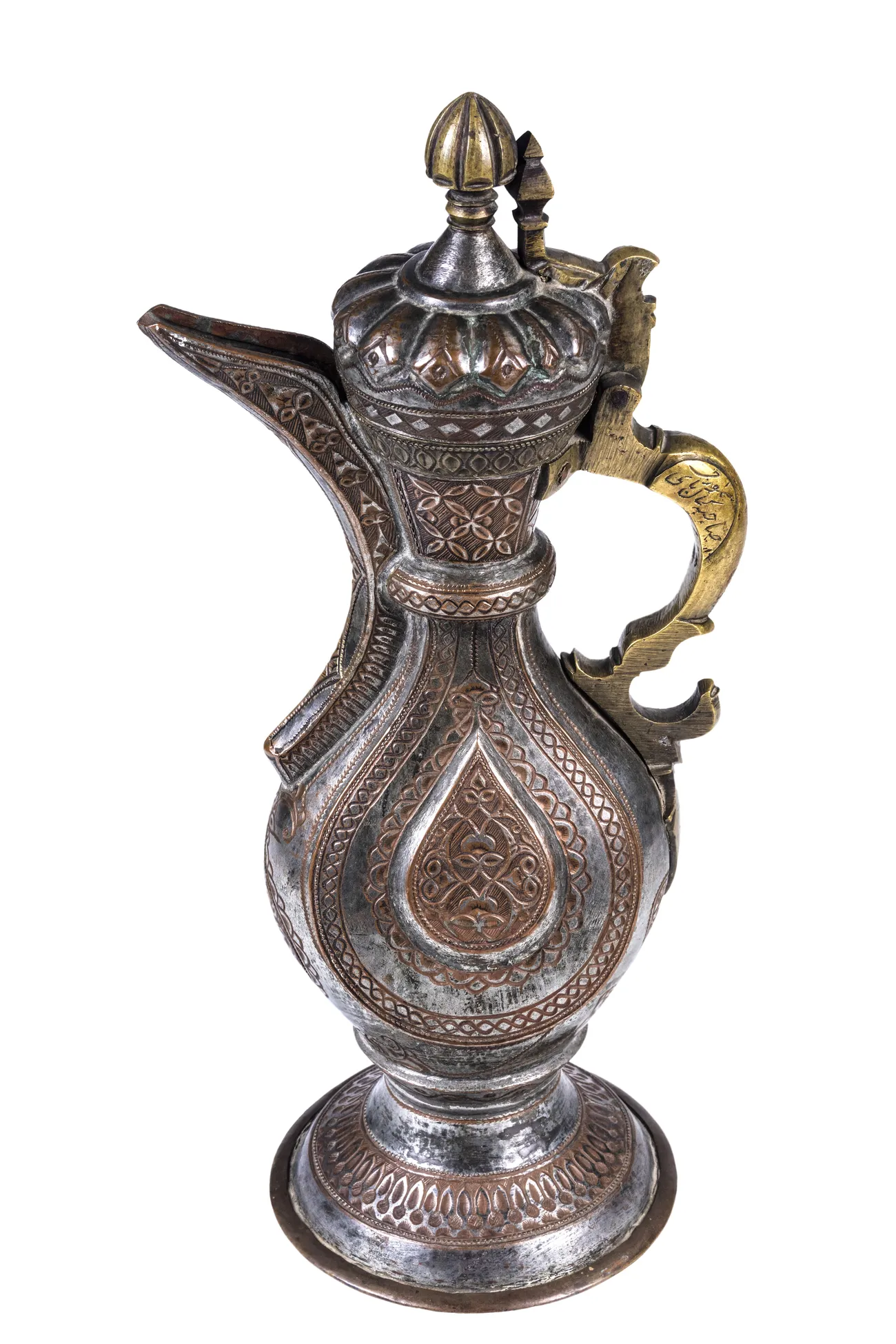Local uniqueness in the copper-chased products of Uzbekistan was manifested mainly in the ornamental decoration and some details being, in general, uniform in shape of the products. The minting technique was the same in all centers. The differences were only in its depth and the use of different techniques for finishing the background and surface of the patterns.
The Kokand copper-hammered products were much more diverse in shape than traditional products from other regions. The closest in shape to other regions are choidish differing, however, in less perfect ratios of individual parts of the vessel; many of them have clumsy, too wide necks and high supports. The shapes of the Kokand water jugs included in the set of washing devices are more varied. Often tall vessels were notable for a bizarre body shape. Individual coppersmiths forged a duck-shaped oftoba. The shapes of candlesticks were original, similar to which were not produced in other regions of Uzbekistan.
Another original type of metal products is seals. They belong to sheikhs, judges, merchants, doctors and other officials. They were used not only to certify a document but also to make amulets and talismans. The paper sealed with such a seal was soaked in water and the resulting solution was taken internally as a remedy. In this case, we can talk about the placebo effect. There was an idea that a person who drank ink dissolved in tea or water, with which a prayer, the names of sheikhs or other sacred lines were inscribed, would get rid of diseases and misfortunes. They drank such water with great faith. One of the seals kept in the museum was made for this very purpose. In total, 21 stamps are kept in the Kokand State Museum-Reserve.
In general, the Kokand embossing is easily distinguishable from the embossing in other regions by its shallow but very clear carving. The plant, mainly floral Kokand and Margilan pattern is very finely divided and saturated with small elements. The overload of the pattern with small details makes it impossible to deepen the embossing technique.
The products of the Kokand embossing of the second half of the 19th century are notable for the variety of techniques used when processing the background and surface of patterns. It is possible to find all the techniques known to chasers: punch, stroke, different types of mesh and curly notches. The craftsmen probably mastered the use of background coloring from the chasers of Karshi, where this technique appeared earlier than in other regions. The innovation did not affect the islimi plant pattern and it continued to be preserved mainly as a floral one.
You can learn more about the topic in the book-album “The Collection of the Kokand State Museum-Reserve” (Volume XLIII) in the series “The Cultural Legacy of Uzbekistan in the World Collections”.
The main sponsor of the project is the oilfield services company Eriell-Group.



